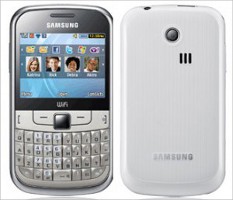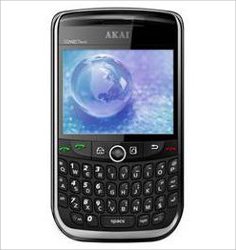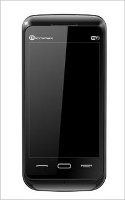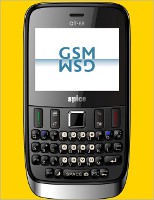It’s been raining mobiles the past two years. Both Indian and MNC handset makers have been on an aggressive path to launch feature phones almost every day, and to choose from a wide array of handsets is a tough task.
Here is a look at some phones that have features such as Wifi:
Lava B8
This latest phone from Lava has been dubbed a business device. Not only does it have features such as Wifi, but also push mail for up to ten mail accounts. The other features are dual SIM, full QWERTY keypad, 2.3 inch screen, 3.2 mega Pixel camera, Bluetooth 2.0, motion sensor (the ability to shake the phone to change songs and play games), social networking apps, and expandable memory as well as a radio, MP3 player, Opera Mini Browser and the ability to use EDGE networks.
All this for merely Rs 4,000!
Samsung Chat 355
This is one of the best Wifi enabled phones in the market, not because of its feature list but since it comes from the house of Samsung, which assures you of quality and also because of its very affordable price of Rs 5,500.
It also features a 2.4 inch screen with 320 x 240 pixel resolution, a 2 mega pixel camera, full Qwerty keypad, Bluetooth version 2.1, and Edge connectivity. Social apps such as Facebook, Twitter, and a chat client are also present.
The phone has an optical trackpad, which is similar to a trackpad on a laptop, though much smaller. Chat 355 is a dual SIM phone with a switch that you can use to deactivate one SIM.
Samsung also has Champ 3303, which features Wifi, at a price of less than Rs 4,000. It has a full touchscreen and is good for music aficionados. But you will have to be content with a 1.3 mega pixel camera and a 2.4 inch screen, which is a little small for touch inputs.
Akai Connect Book
Connect Book is aimed at business users, just like Lava B8. The phone uses Symbian (OS) with Wifi, Bluetooth, 2.4 inch screen (320 x 240 pixels), Qwerty keyboard, a 3.2 mega pixel camera, 3.5 mm audio jack, and a trackball for navigation similar to the kind that BlackBerry phones have.
The phone is well matched with Lava B8 on the features front though it lacks push mail. It does allow you to configure mail, but scores low on price, which is Rs 5,500.
Micromax X560
Micromax X560 is a dual GSM SIM social networking handset with Wifi connectivity. It has a 2.4 inch TFT QVGA 240 x 320 pixel Resolution display and full Qwerty keypad with trackball, a 3.2 mega pixel camera. Other features include social networking, radio, Bluetooth 2.0, and 3.5 mm jack. Its price is attractive at less than Rs 4,000.
Almost all its features match those of Lava B8, except the push mail service. On the pricing front too B8 scores better. However, Micromax is a bigger brand with wider reach and brand recall.
Micromax also has Q7, a Qwerty phone with Wifi (without a trackball, but cheaper). It is a full touch phone but without Edge support, which means that internet will be slower.
Spice QT-68
This Spice phone matches the above mentioned devices in terms of features. In addition, it has two Memory card slots that can together hold 16 GB. The phone lacks a push mail feature, but is among the cheapest with a price of less than Rs 4,000.
The choice here is between a push mail service and more memory.
Verdict
Of these five phones Lava B8 is most feature rich and yet the cheapest. On the other hand Samsung Chat 355 has the brand image of Samsung plus a smooth interface and quality associated with this name, but is certainly the most costly. We believe that the choice is clearly between these two, based on what you prefer.



 Samsung Chat 355
Samsung Chat 355 Samsung also has Champ 3303, which features Wifi, at a price of less than Rs 4,000. It has a full touchscreen and is good for music aficionados. But you will have to be content with a 1.3 mega pixel camera and a 2.4 inch screen, which is a little small for touch inputs.
Samsung also has Champ 3303, which features Wifi, at a price of less than Rs 4,000. It has a full touchscreen and is good for music aficionados. But you will have to be content with a 1.3 mega pixel camera and a 2.4 inch screen, which is a little small for touch inputs. Micromax X560
Micromax X560 Spice QT-68
Spice QT-68